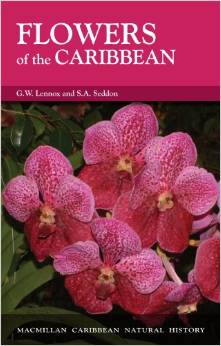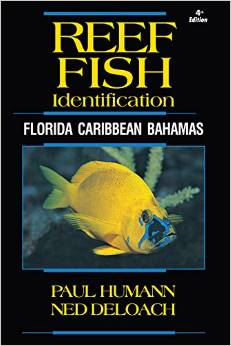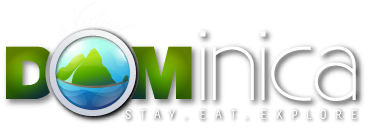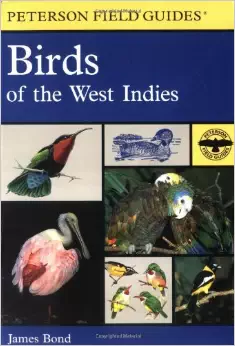 Dominica’s Dive Sites
Dominica’s Dive Sites
The following Dive Sites have been given ratings based on both the currents and the required skill level of a diver. However, as with all dives, plans can change daily.
At the start of a dive vacation, an instructor or divemaster will generally begin the week with easier dives and increase the level of difficulty of the dive site as the week progresses. Given the right conditions, there is no reason why divers should not do a more advanced site on a particular day. Remember, the site destination is determined by the individual instructor or divemaster onboard. He or she is in charge and will let you know whether or not it is safe to dive a site.
Chose a Dive Operator for your Dive Trip to Dominica: Dive Operators in Dominica
Dive Sites
Based on location along Dominica's West coast
![]() – Easy
– Easy
![]()
![]() – Intermediate
– Intermediate
![]()
![]()
![]() – Difficult
– Difficult
 Dive sites in the Portsmouth area begin about 6 miles north of Mero. There are over 10 sites including the following main ones:
Dive sites in the Portsmouth area begin about 6 miles north of Mero. There are over 10 sites including the following main ones:
Point Ronde and the Craters ![]()
![]() Pointe Ronde and the Craters have very gently sloping reef in excellent health showing vibrant colours and marine life in abundance. The latter site starts off around 70 feet and on reaching the craters the reef drops abruptly to 92 and 120 feet. The bottom of these impressive craters is sand marked by curious small holes from which occasional streams of bubbles escape. If the hand is placed on this sand it is warm to the touch, dig beneath the surface and beware it will burn.
Pointe Ronde and the Craters have very gently sloping reef in excellent health showing vibrant colours and marine life in abundance. The latter site starts off around 70 feet and on reaching the craters the reef drops abruptly to 92 and 120 feet. The bottom of these impressive craters is sand marked by curious small holes from which occasional streams of bubbles escape. If the hand is placed on this sand it is warm to the touch, dig beneath the surface and beware it will burn.
The Cabrits Dive ![]() The Cabrits dive site is in fact several sites. Cabrits South and West are both beautiful reefs dropping off sharply to a sandy bottom at 155 and 110 feet respectively and a third site further to the south drops off to below 185 feet. These sites often have currents and offer spectacular drift dives over barrel sponges and schools of Creole fish.
The Cabrits dive site is in fact several sites. Cabrits South and West are both beautiful reefs dropping off sharply to a sandy bottom at 155 and 110 feet respectively and a third site further to the south drops off to below 185 feet. These sites often have currents and offer spectacular drift dives over barrel sponges and schools of Creole fish.
Five Finger Rock ![]()
![]()
![]() In the Cabrits Marine Park, not far offshore from the Cabrits Peninsula. Divers will see plenty of squirrelfish, flounders, tobacco fish, and angelfish.
In the Cabrits Marine Park, not far offshore from the Cabrits Peninsula. Divers will see plenty of squirrelfish, flounders, tobacco fish, and angelfish.
Douglas Point ![]()
![]() Douglas Point offers more than one dive site. At the southern end is a wonderful canyon and tunnel covered in corals and sponges. The western end goes to 100 and is an area where flamingo tongue snails are bountiful. Douglas Point wall, a third site, drops off to 50 feet then slopes down to 180 feet. One often sees lobster and large reef fish including barracuda and cero mackerel at these sites, impressive and curious fish which will come to within a few feet of you before continuing along the reef or back out to the blue.
Douglas Point offers more than one dive site. At the southern end is a wonderful canyon and tunnel covered in corals and sponges. The western end goes to 100 and is an area where flamingo tongue snails are bountiful. Douglas Point wall, a third site, drops off to 50 feet then slopes down to 180 feet. One often sees lobster and large reef fish including barracuda and cero mackerel at these sites, impressive and curious fish which will come to within a few feet of you before continuing along the reef or back out to the blue.
Toucari Bay ![]()
![]() Toucari bay is excellent for day or night dives, this site boasts a wide variety of sea life, including octopus, moray eels, rays, squid, lobster, crabs, trumpet fish, parrotfish and puffer fish, just to name a few. Identify the corals in this area, such as finger, pillar, fire, brain and vase corals. A secluded area with coral covered rocks reaching from the beach out to the main reef at about 40 feet. Toucari Bay is a honeycomb of tunnels; a couple of tunnels 25 and 45 feet long provide exquisite swim-throughs and harbour schools of French grunts. The reef then drops to 110 feet and is home to large schools of mahogany snapper, big crabs and frogfish.
Toucari bay is excellent for day or night dives, this site boasts a wide variety of sea life, including octopus, moray eels, rays, squid, lobster, crabs, trumpet fish, parrotfish and puffer fish, just to name a few. Identify the corals in this area, such as finger, pillar, fire, brain and vase corals. A secluded area with coral covered rocks reaching from the beach out to the main reef at about 40 feet. Toucari Bay is a honeycomb of tunnels; a couple of tunnels 25 and 45 feet long provide exquisite swim-throughs and harbour schools of French grunts. The reef then drops to 110 feet and is home to large schools of mahogany snapper, big crabs and frogfish.
Cottage Point ![]()
![]() One of Dominica’s wreck sites can be found at Cottage Point. The remains of an 18th Century wreck lie in 15 to 35 feet. Links of chain have survived over hundreds of years and lie scattered over the area. From this one can move over to the pinnacles whose vibrant colours and invertebrate life will intrigue and fascinate even the most experienced naturalist diver.
One of Dominica’s wreck sites can be found at Cottage Point. The remains of an 18th Century wreck lie in 15 to 35 feet. Links of chain have survived over hundreds of years and lie scattered over the area. From this one can move over to the pinnacles whose vibrant colours and invertebrate life will intrigue and fascinate even the most experienced naturalist diver.
Pinard ![]()
![]() Pinard has an impressive pinnacle within which is a tunnel roughly 300 feet long. Reef fish are so abundant that the view is one of constant motion and color.
Pinard has an impressive pinnacle within which is a tunnel roughly 300 feet long. Reef fish are so abundant that the view is one of constant motion and color.
Point Break ![]()
![]() At the northern tip of the island where the Caribbean and the Atlantic meet. A must for divers who do not mind currents and love adventure. Travelling along the coastline to get to the site is worth the trip. Large fish in great numbers.
At the northern tip of the island where the Caribbean and the Atlantic meet. A must for divers who do not mind currents and love adventure. Travelling along the coastline to get to the site is worth the trip. Large fish in great numbers.
 Most sites in the west central coast area of Dominica are off Mero Beach, less than 10 minutes by boat from shore. The entire central west coast diving area consists of more than 12 sites which offer some of the healthiest reefs in the Caribbean. These sites are pristine and marine life abounds! This area is secluded and frequented only by small group of divers, snorkelers and boats. Impact on the marine environment has been minimal and this is reflected by the health of the reefs. Some of the best sites in the area include:
Most sites in the west central coast area of Dominica are off Mero Beach, less than 10 minutes by boat from shore. The entire central west coast diving area consists of more than 12 sites which offer some of the healthiest reefs in the Caribbean. These sites are pristine and marine life abounds! This area is secluded and frequented only by small group of divers, snorkelers and boats. Impact on the marine environment has been minimal and this is reflected by the health of the reefs. Some of the best sites in the area include:
Rodney’s Rock ![]() Rodney’s Rock is a shallow (maximum 50 feet) dive offering one of the best critter dives. A huge variety of marine life can be found at this site, which offers mini caves and overhangs for spiny and slipper lobster, crabs and morays. The vertical faces of the shoreline and large rocks just offshore, covered with huge barrel sponges, gorgonians and hydroids make for a spectacular seascape. Sandy patches with sea grass harbour red heart urchins, sea cucumbers, stingrays, spotted snake eel and a very rare and elusive batfish. The walls of Rodney’s Rock are carpeted with corals and sponges providing homes to octopus, frogfish, seahorses and numerous grunts and snapper. This site is a favourite for night dives when squid, lobsters and crabs are out in full view.
Rodney’s Rock is a shallow (maximum 50 feet) dive offering one of the best critter dives. A huge variety of marine life can be found at this site, which offers mini caves and overhangs for spiny and slipper lobster, crabs and morays. The vertical faces of the shoreline and large rocks just offshore, covered with huge barrel sponges, gorgonians and hydroids make for a spectacular seascape. Sandy patches with sea grass harbour red heart urchins, sea cucumbers, stingrays, spotted snake eel and a very rare and elusive batfish. The walls of Rodney’s Rock are carpeted with corals and sponges providing homes to octopus, frogfish, seahorses and numerous grunts and snapper. This site is a favourite for night dives when squid, lobsters and crabs are out in full view.
Nose Reef and Whaleshark Reef ![]() Nose Reef and Whaleshark Reef are located on the south drop-off of the Grand Savanne flats. Both sites are-inspiring reefs starting at about 55 feet and cascading down to 130+ feet. The arrow crabs, banded and Pederson cleaner shrimp together with spotted flamingo tongue snails provide a macro photographer with the perfect opportunity for exceptional and striking compositions. Whaleshark offers a nice vertical face with giant barrel sponges, brilliant yellow tube sponges, stunning azure vases and colorful hard corals teeming with tropical fish. These spots are the outermost sites in the area and offer the greatest opportunity for seeing larger fish such as barracudas, Spanish mackerel and jacks.
Nose Reef and Whaleshark Reef are located on the south drop-off of the Grand Savanne flats. Both sites are-inspiring reefs starting at about 55 feet and cascading down to 130+ feet. The arrow crabs, banded and Pederson cleaner shrimp together with spotted flamingo tongue snails provide a macro photographer with the perfect opportunity for exceptional and striking compositions. Whaleshark offers a nice vertical face with giant barrel sponges, brilliant yellow tube sponges, stunning azure vases and colorful hard corals teeming with tropical fish. These spots are the outermost sites in the area and offer the greatest opportunity for seeing larger fish such as barracudas, Spanish mackerel and jacks.
Rina’s Hole ![]() Just North of Whaleshark Reef lies Rina’s Hole. This is a great shallow dive offering a beautiful swim through leading to a cluster of rock formations encrusted with corals, teeming with moray eels, giant anemones, delicate sea fans and beds of sea plumes. A large swim through cave is home to schools of soldier fish and bigeyes. The colors in this area are even more vibrant due to the contrast with the white sand and the shallowness of the site, which allows maximum sun penetration. This is the ultimate critter dive, as the nooks, crannies and overhangs provide ideal shelter for all kinds of marine life. Large schools of chub are a common sight and on more rare occasions stingrays, spotted cagle ray and nurse sharks have been spotted.
Just North of Whaleshark Reef lies Rina’s Hole. This is a great shallow dive offering a beautiful swim through leading to a cluster of rock formations encrusted with corals, teeming with moray eels, giant anemones, delicate sea fans and beds of sea plumes. A large swim through cave is home to schools of soldier fish and bigeyes. The colors in this area are even more vibrant due to the contrast with the white sand and the shallowness of the site, which allows maximum sun penetration. This is the ultimate critter dive, as the nooks, crannies and overhangs provide ideal shelter for all kinds of marine life. Large schools of chub are a common sight and on more rare occasions stingrays, spotted cagle ray and nurse sharks have been spotted.
Coral Gardens and Batali Pinnacle ![]()
![]() Coral Gardens and Batali Pinnacle provides two of the most sheltered dive sites nestled in Batali bay. Starting off shallow (20-30feet) there are rocks covered in corals and sponges, home to long lure frogfish of various sizes and colours including pink, yellow, brown and black. Ornate lettuce leaf sea slugs inch their way among beds of y-branched algae while lizard fish and sand divers hang out at cleaning stations where the pederson shrimp busily explore and clean gills, mouths and bodies. Sloping gently away from the rocks is a stretch of sand harboring red heart sea urchins; a small gathering of garden eels and often one sees a single upside-down jellyfish displaying its fascinating and extraordinary form.
Coral Gardens and Batali Pinnacle provides two of the most sheltered dive sites nestled in Batali bay. Starting off shallow (20-30feet) there are rocks covered in corals and sponges, home to long lure frogfish of various sizes and colours including pink, yellow, brown and black. Ornate lettuce leaf sea slugs inch their way among beds of y-branched algae while lizard fish and sand divers hang out at cleaning stations where the pederson shrimp busily explore and clean gills, mouths and bodies. Sloping gently away from the rocks is a stretch of sand harboring red heart sea urchins; a small gathering of garden eels and often one sees a single upside-down jellyfish displaying its fascinating and extraordinary form.
 Dive sites in the South of Dominica
Dive sites in the South of Dominica
The Suburbs ![]()
![]()
![]() and Village
and Village ![]()
![]()
![]()
The Suburbs and Village are richly covered rocky drop-offs that are visited by schools of black durgons, huge barracuda, frequent turtles, and often some big stingrays. This is a much wilder area and one never knows what might pass by. But on the quiet days when nothing exciting happens, one is given time to enjoy the magnificent coral life. Huge barrel sponges and walls of incredibly dense deep-water seafans which frequently conceal shy seahorses, hundreds of colourful crinoids and sponges, like splotches of paint from a deranged artist’s pallette.
Condo ![]()
![]()
Condo is also located on the Atlantic side and is a huge chunk of rock, sitting in sixty feet of water on a sandy, sloping bottom. Swim-throughs, overhangs and recesses are unique features of the Condo.
Scott’s Head Pinnacle ![]()
![]()
Northwest of the Condo, the Atlantic and Caribbean Seas converge, creating some of Dominica’s most impressive dive sites. Scotts Head Pinnacle is justifiably one of the island’s most famous dive sites; divers regularly request repeat visits to this site. The dive begins on Swiss Cheese, a large rock formation home to the well-known Soldierfish Cave. Not actually a cave, this swim-through is usually packed with soldierfish and grunts who form a curtain in front of you, briefly parting to swallow you into the school as you pass through. Crossing a flat area of coral encrusted rock formations leads to the Pinnacle itself. At a depth of only 35 feet, a picturesque swim-through bisects the pinnacle, bringing you to the “other side” — a steep wall on the inside of the volcanic crater that falls off to more than 120 feet. The swim-through is usually full of blackbar soldierfish, grunts and lobster. The wall is dominated by deepwater seafans and other colourful gorgonians.
Crater’s Edge ![]()
![]()
![]()
Continuing northwest from Scott’s Head Pinnacle there is a volcanic ridge that leads out to Crater’s Edge, another personal favourite. This site is guaranteed to please. I have spent entire dives never looking at the pinnaacle, but rather staring out into the blue at the masses of black jack, bar jacks, rainbow runners, tuna, yellowtail snapper and cero, all pursuing schools of baitfish who dart back and forth in a futile attempt to escape their hunters. If you can peel your eyes from this frantic activity and look toward the pinnacle you will see waterfalls of creole wrasse and brown and blue chromis. Behind all this activity is a spectacular wall covered in colourful sponges and giant barrel sponges. It is not uncommon to be followed by one or two giant barracuda escorting you from the area. The Crater’s Edge Pinnacle can easily be circumnavigated during a single dive, or one could follow the volcanic ridge towards Scott’s Head Pinnacle.
Scotts Head Drop-Off ![]()
![]()
Coming around the corner from these dive sites, one enters the Soufriere/Scotts Head Bay. This area is more protected from the elements and one rarely encounters waves or currents. Starting on the most western point is Scott’s Head Drop-Off (Scott’s Head Point), my second favourite dive site on the island. This wall is spectacular at any depth, from forty to one hundred feet. It is an incredibly colourful dive with pink and azure vase sponges, orange icing sponges, yellow tube sponges, and green rope sponges. The many small nooks and crannies hide lobster, crabs, and many different kinds of cleaner shrimp. The end of this dive consists of a fifteen foot safety stop that is so vibrant that it could be a dive all in itself.
Soufriere Pinnacles ![]()
North of the village of Soufriere, the first dive site is Soufriere Pinnacles, a popular second-dive site. This summer this dive site was noted for having six frogfish and two seahorses.
L’Abym and Witches Point (La Sourciere) ![]()
Soufriere Pinnacles leads into L’Abym, a fifteen hundred foot wall that plunges straight down from the cliff face. Some parts of the wall are extremely steep, dropping off into the deep blue. It is also common to find frogfish and seahorses here.
Dangleben’s Pinnacles ![]()
![]()
My favourite dive site north of Soufriere village is by far Dangleben’s Pinnacles. A series of five pinnacles ranging in depths from forty to eighty feet, they are covered in every imaginable form of sponge and coral. In the winter months, the southernmost pinnacle becomes a feeding frenzy of barjacks, horse-eye jacks, crevalle jacks, cero and the occasional barracuda busily hunting schools of baitfish. All this is back-dropped by waterfalls of mating blue creole wrasse. As a famous Divemaster once said, “If you’re tired of Dangleben’s, you’re tired of life.”
Coral Gardens and Point Guignard ![]()
![]()
In shore from Dangleben’s Pinnacles is Coral Gardens, a shallow and colourful dive with large areas of finger and pencil coral. Just to the north is Point Guignard, a gradually sloping area rich with small creatures like seahorses, nudibranches and sea slugs.
Champagne Reef ![]()
Champagne Reef is the northernmost dive site in the Marine Reserve and is Dominica’s most famous diving and snorkeling site. This sub-aquatic hot spring is in about fifteen feet of water and spews forth hot water and bubbles, giving the effect of diving in champagne. It is quite common to see schools of squid and huge stoplight parrotfish around this area.
Recommended Reading
Birds of the West Indies
By James Bond A Petersen Field Guide Buy on Amazon
Snorkelers & Divers will enjoy this Waterproof Fish ID card to help them identify the fish to be seen in Dominica.
Order from Amazon:
National Geographic – Guide to Caribbean Reef fish – Fish ID Card (6 in by 9 in)

Flowers of the Caribbean
By G. W. Lennox and S. A. Seddon Macmillan Caribbean Buy on Amazon

Reef Fish Identification
By Paul Humann and Ned Deloach Florida Caribbean Bahamas – 4th Edition (Reef Set) Buy on Amazon


